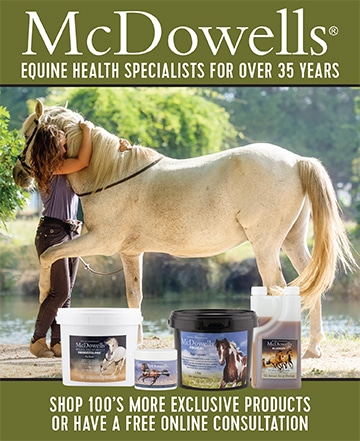Previously, in part 1 of this series, 5* eventer Sarah Clark explained the fundamentals of training and riding cross country. It all comes down to developing a partnership rather than a dictatorship, with the rider learning to control the line and pace, while the horse is responsible for where it places its feet. Doing this effectively requires feel and instinct on behalf of the rider and focus and coordination from the horse.
The good news is these skills aren’t just honed on a cross country course. While there is no substitute for cross country and terrain schooling, exercises in the arena are also an excellent way to build you and your horse’s cross country ability.
Here Sarah walks through arena cross country exercises, from the very green horse, to the more experienced horse.
Starting early
Your horse doesn’t even need to be jumping to begin their cross country preparation. As long as you have stop, go and basic turning, you are able to start putting in the cross country basics. Sarah explains more here:
Scattered poles
Pole patterns
Introducing narrow poles
Once your horse is comfortable with the pole exercises, you can get them used to the idea of narrow fences by walking and trotting over narrow poles. Remember point 3 from the first article, you need to keep your horse straight with your ‘bumpers’.
Introducing drums
To begin jumping potentially spooky objects like drums, Sarah begins with a drum on each side of the pole, before gradually moving them closer so the horse is jumping the drums.
From there she will take one drum away, so the horse is jumping a single drum with wings either side.
Once the horse is confident and straight, she will begin moving the wings further away from the drum. Guiding rails placed on the end of each drum can also help.
Putting together a course
Once your horse has been introduced to narrow fences and has practiced finding its own stride over poles, you can string together a course of regular show jumps, drums, skinnies, and even makeshift apexes.
Rather than setting smooth lines with perfect distances, place the jumps irregularly so the horse has to focus on its footwork, while you keep your focus on the line and pace. Initially these jumps should be set much lower than the height you and your horse are confidently jumping. Make sure they always stay low enough that a mistake or awkward distance will be a learning experience, without shaking you or your horse’s confidence.
Sarah demonstrates some examples with her more experienced horses below.


